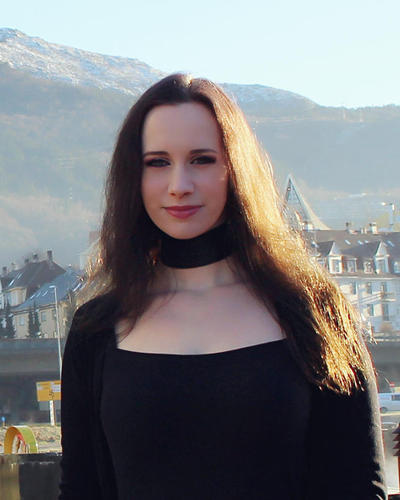Meet people at II - Noeska Smit
- I really enjoy working here with the people in the visualization group, and also the opportunities for collaborating with other scientists. Besides work, I think the city of Bergen is really amazing. Both my partner and I love the nature that the surroundings of Bergen have to offer, and the large metal community here as well.
Hovedinnhold
This says Noeska Smit, our new associate professor in visualization, about the best part of working in Bergen. In this video she tells us about her research in medical visualisation and shows us one of the tools that she has helped create in order to teach medical students complex anatomy. And to get to know her a little bit better:
Can you tell us a bit about your background before you came to UiB: - After high school, I was not so interested in going to university and wanted to do something practical to help people. For that reason, I worked as a radiographer in a hospital for three years. This is a combination of working and learning, but after I got my certificates, I wanted to do more. The CT and MRI scanners featured workstations with software that allows you to create 3D reconstructions from the data which is typically visualized as 2D 'slices' first. This always fascinated me, so I decided to study Computer Science at the Delft University of Technology in the Netherlands, specializing in Computer Graphics and Visualization. I also obtained my PhD in medical visualization from the same university, on the topic of creating and employing a 3D virtual atlas of the pelvis to assist in medical education and surgical planning. I feel like I am still helping people, although a bit more indirectly than when I was a radiographer.
Why did you choose to apply for a position here? - There are several reasons why I applied for a position here in Bergen, but the primary one was that the Bergen visualization research group is very well known in the visualization community internationally. There are not so many groups with such a strong track record in my main interest, medical visualization, specifically. For example, there is a really cool interdisciplinary research collaboration here in the MedViz cluster, bridging many areas of biomedical and clinical research. Now there is also a brand new Medical Imaging and Visualization Centre, which I am looking forward to being active in. Besides all this, the people here and the city are awesome. I came here on a research visit for a month in 2015, and really felt at home quickly.
What is the essence of your research project? - I am involved in many different research projects, but most of the time they involve a close interdisciplinary collaboration between visualization researchers, medical researchers, and clinicians. A typical scenario is that there is a clinical problem, for instance a high frequency of nerve damage during surgery, and we look for ways to help solve this problem using visualization techniques to visually encode information from medical imaging data in an effective way. After developing these visualization techniques, we evaluate them with the clinicians or medical researchers.
If you were to explain your research to a 10 –year old what would you say? - We create computer programs that help doctors help patients in a better way. We do this by looking at what sort of problems we can help them solve, and what type of data they get, for instance from CT or MRI scanners. Then we take the images that come from these scanners, and make other images based on these, for example by stacking them on top of each other and making a three-dimensional model of the patient in the computer. We use these new images in interactive programs, so that doctors can use these for example for diagnosing diseases or planning surgeries.
Any “culture-shock- experiences” you would like to share? - In the Netherlands, it is common to give someone you know three kisses on the cheeks if you have not see them in a while, and are happy to see them again. When I returned here to start my job (after the research visit the year before), I greeted people like this, and this was met with mixed reactions :) Over the years, I found that some prefer to give a handshake, a hug, just two kisses, or even nothing, but at this point, I never know anymore which is appropriate for which culture. Another thing is that in the Netherlands, you always have to bring cake to work on your birthday (or closely before or after if it's in the weekend), either 'hjemmelaget' or store-bought. So far at work, I think I am the only one that did this, though I guess there were no complaints there ;)
Welcome to the department, Noeska!
You can see and hear Noeska tell more about her research in the video on the top of the page.

